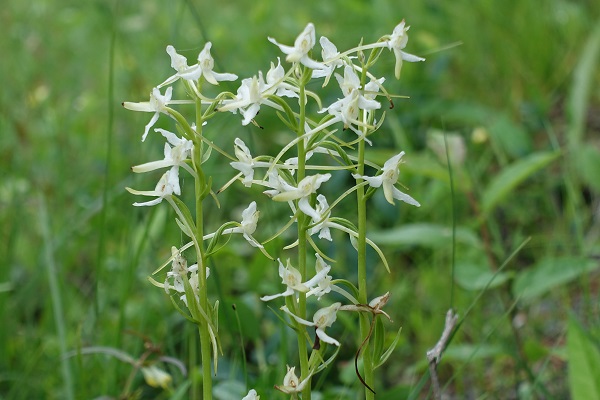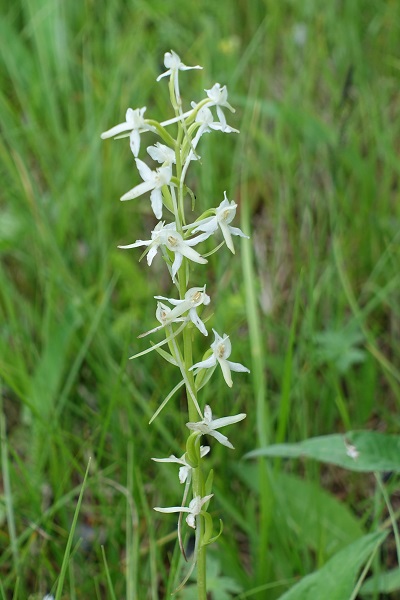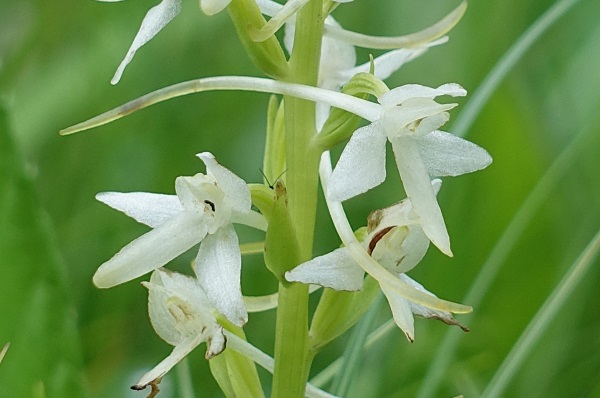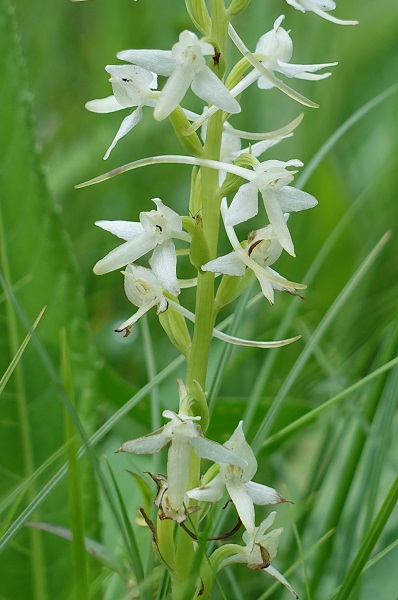
| Scientific name: | Platanthera bifolia (L.) L.C.Rich. | |
| Swedish name: | Nattviol | |
| German name: | Zweiblättrige Waldhyazinthe | |
| Nederlandse naam: | Welriekende nachtorchis | |
| English name: | Lesser butterfly-orchid | |
| Family: | Orchidaceae, Orchid family, Orkidéer |

|
| Life form: | Tuberous perennial herb | |
| Stems: | Height up to 30cm, stem arising from two broad basal leaves | |
| Leaves: | Two basal oval leaves at the base of aspike-like inflorescence | |
| Flowers: | Many flowerd spike with cream, whitish flowers, sweetly scented in the evening; each flower bears a very long slender spur at the rear; each flower contains two pollinaria situated on each side of the spur entrance; each pollinium contains hundreds of massulae | |
| Flowering Period: | June-July | |
| Fruits: | The fruit is commonly pollen limited; microscopically tiny seed | |
| Habitat: | Meadows, open woodlands | |
| Distribution: | From Skåne to Jamtland |
 Derivation of the botanical name: Platanthera, Greek platos wide; anthera stamens. bifolia, bi- two; folium leaf, the name means two-bladed, referring to the two basal leaves.
  |